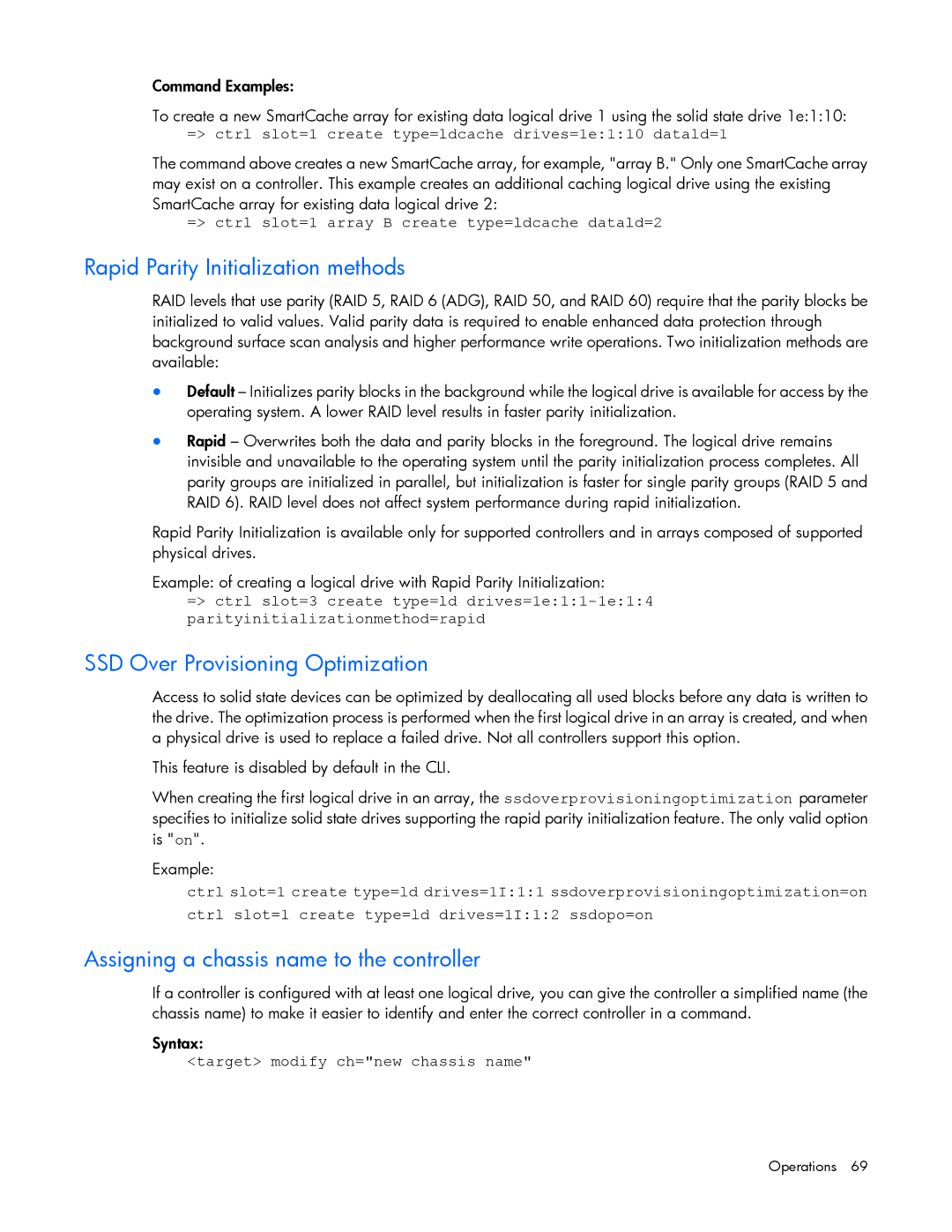Command Examples:
To create a new SmartCache array for existing data logical drive 1 using the solid state drive 1e:1:10: => ctrl slot=1 create type=ldcache drives=1e:1:10 datald=1
The command above creates a new SmartCache array, for example, "array B." Only one SmartCache array may exist on a controller. This example creates an additional caching logical drive using the existing SmartCache array for existing data logical drive 2:
=> ctrl slot=1 array B create type=ldcache datald=2
Rapid Parity Initialization methods
RAID levels that use parity (RAID 5, RAID 6 (ADG), RAID 50, and RAID 60) require that the parity blocks be initialized to valid values. Valid parity data is required to enable enhanced data protection through background surface scan analysis and higher performance write operations. Two initialization methods are available:
•Default – Initializes parity blocks in the background while the logical drive is available for access by the operating system. A lower RAID level results in faster parity initialization.
•Rapid – Overwrites both the data and parity blocks in the foreground. The logical drive remains invisible and unavailable to the operating system until the parity initialization process completes. All parity groups are initialized in parallel, but initialization is faster for single parity groups (RAID 5 and RAID 6). RAID level does not affect system performance during rapid initialization.
Rapid Parity Initialization is available only for supported controllers and in arrays composed of supported physical drives.
Example: of creating a logical drive with Rapid Parity Initialization:
=> ctrl slot=3 create type=ld
SSD Over Provisioning Optimization
Access to solid state devices can be optimized by deallocating all used blocks before any data is written to the drive. The optimization process is performed when the first logical drive in an array is created, and when a physical drive is used to replace a failed drive. Not all controllers support this option.
This feature is disabled by default in the CLI.
When creating the first logical drive in an array, the ssdoverprovisioningoptimization parameter specifies to initialize solid state drives supporting the rapid parity initialization feature. The only valid option is "on".
Example:
ctrl slot=1 create type=ld drives=1I:1:1 ssdoverprovisioningoptimization=on ctrl slot=1 create type=ld drives=1I:1:2 ssdopo=on
Assigning a chassis name to the controller
If a controller is configured with at least one logical drive, you can give the controller a simplified name (the chassis name) to make it easier to identify and enter the correct controller in a command.
Syntax:
